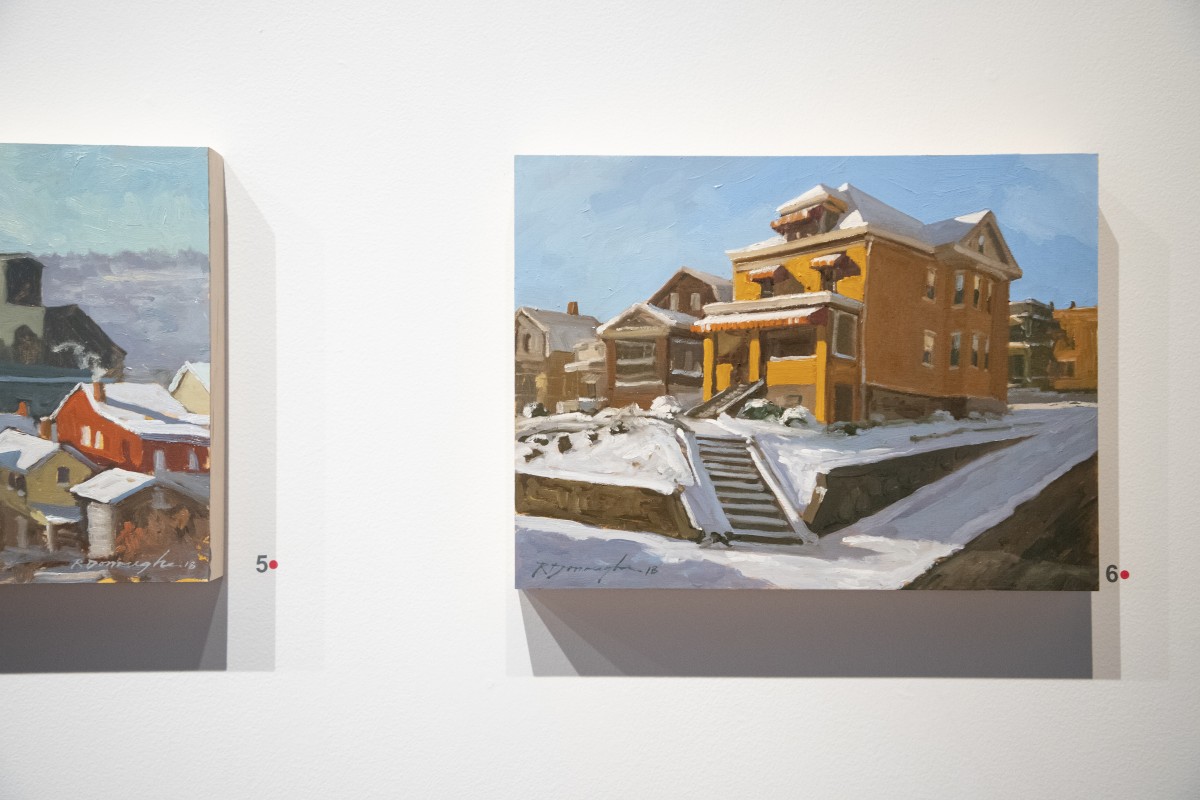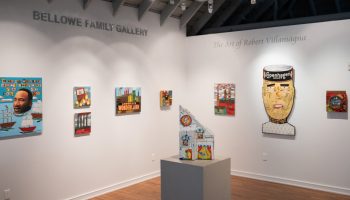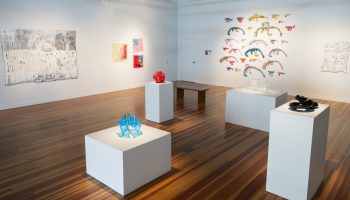Review by Anthony Bannon
Ron Donoughe, the painter from Pittsburgh, may not like it, but I am here to declare that his document-driven views of the urban landscape are a magical realism. The sprites of art abound in his tiny paintings, lined up like a spine around the Bellowe Family Gallery in Strohl Art Center, oil on cradled birch panels, thrusting an inch or two off the wall, no need for any frame.
Look closely and you will see, down there at the end of a blunted city alley. The alley stretches unfulfilled toward a vanishing point, but at the supposed end of things, you will find a tangle of wires crisscrossing the street in a strange light. This is an abstraction worthy of the gods. And it goes on like that in Donoughe’s paintings: the dawn bringing to light a spread of modest houses, seen again against a dominating gray hulk of a steel plant’s basic oxygen furnace.
Magical.
Magical realism, or just plain magic realism, started in as a considered approach early in the 20th century, although it surely animates the lush realism of so many of the old masters, among them and notably Giotto di Bondone and Michelangelo Merisi da Caravaggio. In the 20th century, this pumped-up candor in depiction boldly added the inspirations of dreams and fantasy, and the fantastic drove the real toward an abstracted imagination, more true than true.
Donoughe paints quickly on site to catch a fleeting light that brings accented life to common observation. Sometimes he paints thin and stripped bare of context — quick to catch an abandoned store marking a street divided. Yet sometimes he returns to the site, careful to arrive at the same time of day and light, and he adds finishing depth, that handling of paint with complexity, which requires several layers of subtle coloration.
His strategy on the street infers the work of two Depression friends, Charles E. Burchfield and Edward Hopper — stark, blunt and so much to the point that their work makes much more than a point. It makes a world.
Paintings by Donoughe are a design delight, a crowded field of the backs of buildings, a rush of difference — stucco against board, planes against the penetrations of windows. And all of this is defined by a clip of light across the tops of backyard fences.
One finds that Charles Dickens’ light down empty streets; up a winter street that Walt Whitman could have walked. These are delights for the eye’s mind, both in play.
Judy Barie, the Susan and Jack Turben Director of VACI Galleries at Chautauqua Institution, suggested this exhibition to the artist. Donoughe’s reputation is with landscapes in the foothills of the Allegheny Mountains and with winter paintings. He had done some cityscapes and industrial scenes in the city. Barie wanted more.
A good thing.
Anthony Bannon is writing about art and culture full time now. He was the art critic for the Buffalo News and for several magazines. He is the emeritus director of George Eastman Museum in Rochester and the Burchfield Penney Art Center at SUNY Buffalo State.







